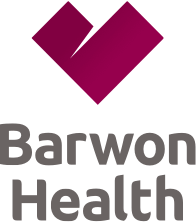Harm Reduction Services
Harm reduction is a set of practical strategies and ideas aimed at reducing negative consequences associated with drug use. Harm reduction is also a movement for social justice built on a belief in, and respect for, the rights of people who use drugs.
For more information and a discussion of the principles of harm reduction, please click here.
Barwon Needle Syringe Program Services
Barwon Health Drug and Alcohol Service
Mobile service 9am – 3.30pm, ph 1800 196 850
The program operates from Corio Community Health Centre, 2 Gellibrand Street, Corio, 9am to 5pm.
Barwon Health Drug and Alcohol Services operates a mobile needle syringe service, staffed by experienced workers who are able to confidentially deliver injecting equipment, collect used equipment if in suitable containers (which can be provided) – and offer safer injecting advice and information.
126 Lt Malop Street no longer offer a NSP service.
Community Needle Syringe Programs
Each of Barwon Health’s Community Health Centres operates a confidential, free, needle syringe program, stocking a wide range of injecting equipment and disposal chutes for used equipment.
Syringe Disposal Locations:
- Anglesea Community Health Centre, McMillan Street, Anglesea - 8.30am – 5pm Mon – Fri (map)
- Belmont Community Health Centre, 1- 17 Reynolds Road, Belmont - 8.30am – 5pm Mon – Fri (map)
- Corio Community Health Centre, 2 Gellibrand Street, Corio - 10.00am – 4pm Mon – Fri (map)
- Newcomb Community Health Centre, 104 – 108 Bellarine Hwy, Newcomb - 8.30am – 5pm Mon – Fri (map)
- Torquay Community Health Centre, 100 Surf Coast Hwy, Torquay - 8.30am - 5pm Mon - Fri (map)
📍 Map of Syringe Disposal Locations
Outside business hours
Syringe vending machines are located at:
- Alongside the Barwon Health Youang Surgery Centre in Ryrie Street, Geelong between Bellerine Street and Argyle Street
Corio Community Health Centre, Gellibrand Street, Corio
📍 Map of Syringe Vending Machines
These machines offer a range of injecting equipment are free of charge.
📍 Map of Syringe Disposal Locations
The emergency department at University Hospital Geelong no longer offers a NSP service.
Take Home Naloxone
How to Access
There is no assessment process to access this program, please call 1800 196 850 to speak to one of our staff.
What is an overdose?
Overdose often happens accidentally. It happens when a toxic amount of a drug or combination of drugs overwhelms the body. People can overdose on many substances including alcohol, prescription drugs like diazepam, or opioids like heroin, methadone and OxyContin.
What happens when someone overdoses on opioids?
The brain has many receptors for opioids. When the level of opioids used sedates a person to the point that they are unresponsive, their breathing rate slows down and/or stops completely. This happens because opioids affect the respiratory part of the brain, causing breathing to slow down.
Overdose risk factors
The risk of an overdose is increased when:
- Someone first starts using opioids
- After taking a break from using opioids, such as prison, stays in detox/rehab
- Following completing any kind of drug withdrawal, including home withdrawal
- Switching opioids and not being aware of dose comparisons
- Using other substances at the same time, such as alcohol, diazepam
- Injecting drugs
- Not being in control of the injecting situation
Facts about opioid reversal
THERE IS TIME TO RESPOND – Overdoses can but do not always occur instantly. Promptly calling 000 and following an overdose protocol can save a person's life.
OFTEN PEOPLE ARE PRESENT - We know from research that approximately 70% of overdoses occur with someone else present.
NALOXONE IS EASY TO ADMINISTER – Naloxone hydrochloride is used to temporarily reverse an overdose. It comes in both ampoules, prefilled syringe and in a simple-to-use nasal spray.
NALOXONE DOES NOT INCREASE OPIOID USE – There is no evidence that shows that by having access to Naloxone increases the likelihood of a person using more opioids than if it was not available.
SAVING A LIFE OUTWEIGHS THE RISK OF UPSETTING PEOPLE
RECOGNISING THE SIGNS AND SYMPTOMS OF AN OPIOID OVERDOSE
Signs of an opioid overdose include:
- Fingernails and/or lips having a blueish tinge/colour
- Vomiting, or gurgling breath
- No response to stimulus, such a pain from rubbing the sternum
- Cannot be roused/awoken
- Breathing is very slow/shallow/irregular or noisy
- Deep snoring
- Change in colour of skin, in fairer skinned people blue, for darker skinned people greyish colour
Items in stock
Barwon Health distributes harm reduction supplies, providing sterile, single-use equipment to help prevent disease transmission and reduce the potential health risks associated with drug use.
Click here to view a list of item in stock and helpful tips.
Last Modified: Tuesday, 09 April 2024
Contact us
Level 1, 126 Little Malop Street
Geelong, Victoria
Ph. 1800 196 850 (freecall)
Useful links
📍 Map of Syringe Disposal Locations
Barwon Health offers 24/7 help, information or referral via our Mental Health, Alcohol and Drugs Services triage.
